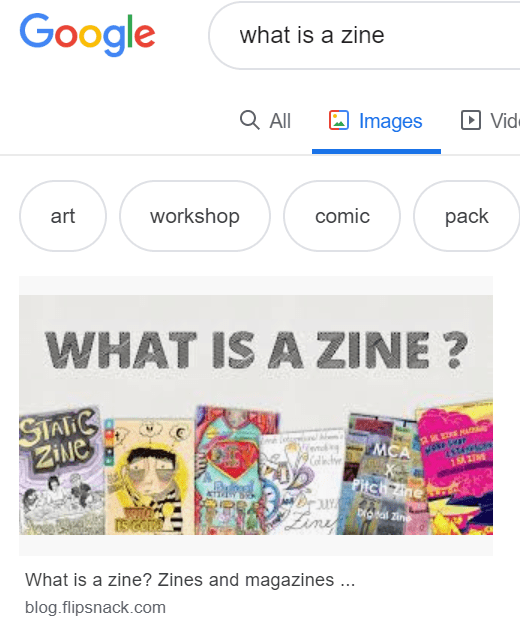Here’s How to Structure a Good Blog Post for Readers & Search Engines

Whenever I see someone posting a photo on Instagram, they are adding a caption. And if they are adding a caption, they are writing. Look around and you might find a lot of people writing today, not just in short-form social media captions but also in long-form content. In fact, with so many social media users, it’s safe to say that EVERYONE is a writer today! Not just aspiring authors, but people who write non-fiction. People who feel the need to express their opinions on Medium, on a blog, be it for the company they work for as part of a corporate blog or their personal one. Even people who transform their passion for writing and do it regularly by contributing to a digital magazine, or even the ones who like to share their thoughts on social media through micro-blogging. Despite this, how to structure a good blog post is a topic that isn’t talked in the blogosphere about as much as it should be.
Why is the topic of good blog post structure so important? Because, according to WordPress, there are approximately 80 million posts being published monthly on this platform. That’s a LOT of competition!
But do all these people know what it takes to write a good blog post? And what does “a good blog post” even mean nowadays? Today I will share with you my experience of writing successful blog posts.
Why have a blog?
Everyone knows that having a blog can be a successful marketing strategy to reach your target audience faster and more effectively. And if you are an expert in your field, even better. People appreciate valuable content now more than ever.
So, if you feel like you have something useful to share with your audience or you have a way with words, having a blog is the perfect medium for all your writing endeavors.

It seems like 81% of companies consider their blogs “useful,” “important,” or “critical” and B2B marketers who use blogs generate 67% more leads than those that do not.
These statistics should be a good enough reason to start a blog for your company. Or to develop your personal brand through a well-written blog.
However, you shouldn’t do it just for the sake of having a blog. Everyone can start a blog. It takes a few minutes to get started with WordPress, which is exactly how this blog began. The way you develop your blog content strategy and structure your blog posts is crucial for having success in this area. Maybe find a niche and explore it.
Start with the audience in mind
When you write a blog post, you want to offer valuable content to your audience.
In order to do so, after figuring out the idea of what your blog post will be about, is to figure out what point of view to take on the matter. In order to have a good blog post structure, you need to map out the main ideas to highlight and discuss in your content piece. Think about what your audience wants to read on this subject. Always, always start with this in mind.

Just like a good DJ, you need to figure out who your crowd is. It will tell you a lot about what you should write that will be of interest.
Keyword research
Your next task is to go online and do your homework and do some keyword research.
Search for specific keywords that can be included as part of your main headings. Read everything you can find online on those specific keywords and make sure not to talk about the same thing.
Is there still something new you can add to that? Do you have a new perspective on the matter?
These are two of the most important questions to answer before figuring out how to structure a good blog post.
A great free tool, that I am sure many of you know about is Neil Patel’s Ubersuggest. As a content marketer, you should bookmark it and thank me later.
Ubersuggest is perfect for doing your keyword research and seeing what content ranks on Google for the keywords you had in mind. Not to mention the SEO difficulty and average monthly searches or backlinks. You basically have all the intel you need to target the right keywords based on how competitive you blog is in search engine rankings.
If you want a more advanced tool, check out the tool that I use, SEMrush.

First steps on how to structure a good blog post
Now that you have done the groundwork, let’s dig deeper into what the structure of a good blog post looks like.
Nail the introduction
As all of us here know, a good blog post should start with a catchy title and introduction.
Having a clear introduction will map out what your blog post is really about. You can start by using an anecdote to gain some trust and let readers know you’re an authority on the topic. What I like to do though is to start with some good storytelling. Something that will introduce the topic in a creative way. You wouldn’t want to bore the audience from the first few seconds.
So instead of deconstructing the subject you want to introduce, simply go for a story related to that. This article started by looking at Instagrammers with the perspective of them being writers. Make the reader interested in what they’re going to read next.
Example of a good introduction:

Why does this work? It briefly introduced the concept of influencer marketing, so the reader knows what to expect next. Secondly: it’s got numbers and that will always make things more interesting and trustworthy. It makes me as a reader feel like I am reading something that is actually true. Last but not least, it leaves the reader wanting to know more about what to do to avoid certain mistakes and not waste money when it comes to influencer marketing.
Use headings
On the subject of how to structure a good blog post, you will see that this blog post has a lot of headings. For me, headings are super important, they help in putting my ideas together and having a more clear structure of the article I am going to write.
Headings are also the perfect way to catch attention and clearly state the content of the paragraph below it. In such a way they are equally important to the reader – and Google – as it allows them both to skim and understand the main points that your blog post brings up. In doing so, it allows readers to quickly scan through your text and decide if they want to take further action into reading it.
As a useful blog post SEO tip, make sure to include some of your keywords in your headings, too. Google will love it if you do that. It will help the search engine determine what the text is about.
For example, when talking about LinkedIn marketing, here are two perfectly good headings to that could be included in your article:
- Why use LinkedIn as a marketing channel?
- Linkedin marketing strategy tips that actually work
Have clear paragraphs
Having a clear introduction and paragraphs is crucial to catch and keep the attention of potential readers. Additionally, paragraphs should lead into each other. There should be a clear flow of thought between each paragraph. The more you get distracted with off-topic rambling, the more the reader will get distracted, too.
No one has time to search for a term on Google and then going through tons of useless content that is not relevant to him or hard to read. This is why using short but clear paragraphs and sentences is crucial for knowing how to structure a good blog post.
Always break down your content into paragraphs, clear bullet points or even images. This will help improve readability.
This brings us to the critical subject of images.
Images are crucial
You can’t mention the structure of a blog post without mentioning the importance of images. Too often you’ll find articles without any images at all. And although their content is pretty good, it definitely feels empty.
3 major reasons for using images in your blog post
Let’s talk about the first and probably more obvious one: they help tell the story. We as humans naturally love a good story. A good image in the right place can really help readers visualize and understand the subject better.
The second reason images are so useful is because they divide the text. Let’s all be honest with ourselves and admit that when we see giant walls of text, it’s easy to just ignore them. But in all honesty, it’s exhausting to read a ton of text, especially if you don’t really have to. Throwing a nice image in there will give their eyes a small resting period, which means that they’re more likely to make it to the bottom of the page.
Lastly, images help your blog post rank. That’s right, images are a ranking factor. Just like you add keywords to an article, you can attach keywords to an image and help readers find their way to your post.

Have a conclusion
Having a conclusion is just as important as the introduction. You see, a lot of people will only read the introduction and conclusion while skimming the rest of the article. Therefore, having a proper conclusion to sum everything up is essential. It’s also your very best chance to have a call to action. Maybe you want to spark conversation between you and your readers.
Then ask a question and have them reply in the comments section. What a better way to build a community around your blog?
Don’t forget your call-to-action
Whatever objective you have for writing the blog post, make sure you make it actionable and measurable by adding a call-to-action near or at the end of your blog post.
What call-to-action to include? Perhaps your interest is to build a better, bigger mailing list or a massive social media following. If this is the case, include social media buttons or an e-mail box. But make sure to communicate that you won’t be spamming your readers and that they will only receive useful, curated content from you.

No matter the call to action, make sure that you make it as clear and direct as possible without letting the readers feel like they are being taken advantage of.
Get feedback
Before putting your work out there on the Internet realm, make sure you get feedback on it. Maybe ask some of your colleagues or friends to read it. Yes, I know what you might say, these people are not necessarily your target audience. But that’s even better if you ask me. Because you can experience other points of view. Not to mention the useful feedback a fresh new pair of eyes can give you. At least when it comes to grammar and readability.

How to know if your blog structure works with your audience
So you finally finished writing that blog article and you are super proud of it. From my experience, though, this is where the hard part comes in. Sure, learning how to structure a good blog post is essential. When it comes to distributing your content using the right channels, things get more complicated. All of us want our content to rank as high as possible so that all the hard work won’t be in vain.
Here are some of the tactics you can use:
- Get valuable feedback through a digital newsletter. Your email subscribers are already attached to your brand. Make sure to let them know every time you post something new. Spark useful conversations and build a community around your content. They will also be the first to do social sharing.
- After publishing your content, make sure to keep an eye on traffic results and see how it compares to articles with a different structure. The metrics you should be observing are: average time spent on that particular page and bounce rate. This will determine if your piece of content is easily digestible.
Wrapping things up
When it comes to the science behind how to structure and write a good blog post, there is no hidden secret. But rather a lot of trial and error. Of course, you need top-notch grammar skills and coherence. But what else? You need to be opinionated!
Writing good blog posts to present new ideas should be about being authentic rather than having academic writing skills. After all, it’s all about sparking useful conversations.
What do you think? Leave your opinion in the comment section below and let’s talk.
Key takeaways:
- Have a clear but catchy introduction
- Use headings, Google loves them.
- Short paragraphs. Yoast says to keep them under 300 words.
- Use plain language.
- Always use images that help you rank for your keywords.
- Have a clear conclusion.
- Use call to actions.
This is a post written by me on behalf of one of my marketing partners. All opinions are 100% mine.
